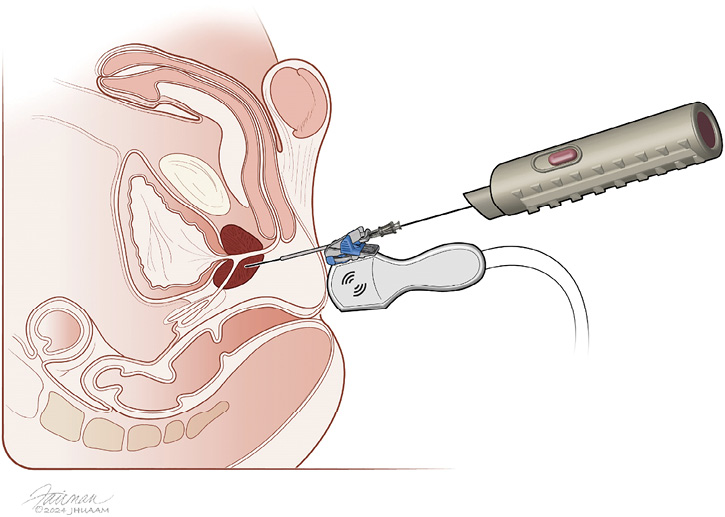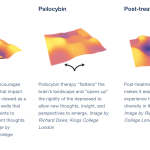
New Imaging Probe: A Breakthrough in Prostate Cancer Management
The recent breakthrough of a new imaging probe developed by researchers at Wayne State University and the Barbara Ann Karmanos Cancer Institute marks an exciting turning point in managing prostate cancer. Experts in modern medicine and alternative treatment approaches alike now have a tool that not only tracks cancer growth but may also shape direct treatment methods before cancer develops resistance to current drugs.
This innovative chemical probe is designed to resist the breakdown of specific compounds in the body, delivering a more dependable way to observe prostate cancer cells as they evolve. Such reliability is key when doctors are trying to figure a path forward, especially given that the body’s hormone receptors can sometimes drive cancer growth in ways that are tricky to manage.
Combining Chemistry and Computational Science to Manage Your Way Through Treatment Decisions
The development of ARi-FL, a series of visible- and near-infrared fluorescent androgen receptor (AR) inhibitors, has brought together the world of chemistry with modern computational science. That fusion allows researchers to fine-tune the probe, ensuring that it remains stable and effective even when faced with mutations and the convoluted pieces of hormone signaling that underlie prostate cancer.
At the heart of this advancement is the diligent research of Dr. Sheryl Roberts, Assistant Professor of Oncology at the WSU School of Medicine, who has focused on creating robust imaging tools. Working in close collaboration with Dr. Christopher Kelly from the College of Liberal Arts and Sciences, the research team is not only tackling the little details of chemical stability but also working through computational modeling to simulate how the probe will perform in a real human body.
Working together across traditional academic boundaries, the team has reimagined how tracking the androgen receptor can provide valuable insights for tailoring treatments. Using such a hybrid approach in which traditional lab work merges with modern simulation techniques is a testament to the importance of finding your way through combining different scientific disciplines for the benefit of patient care.
Tracking Androgen Receptor Signaling Over Time
One of the trickiest parts of treating prostate cancer is the challenge posed by the androgen receptor – a protein that plays a crucial role in the development and progression of the disease. Prostate cancer is often driven by hormone receptors, and while drugs have been developed to suppress these receptors, many patients eventually experience resistance.
Dr. Roberts remarked that being able to track androgen receptor activity over time could help doctors choose the right treatment sooner and more effectively. This improved monitoring method stands in contrast to current approaches where the subtle parts of drug resistance are often detected too late. Tracking AR over time can help clinicians adjust treatment plans before the cancer enters a dangerous phase known as castrate-resistant prostate cancer.
Key benefits of tracking AR in this manner include:
- Real-time monitoring of hormone receptor signaling
- Early detection of resistance to current drugs
- Customization of treatment strategies based on evolving cancer cell profiles
By lighting up the androgen receptor, the ARi-FL probe serves as a sort of “beacon” in the dark tunnels of disease progression. This approach may serve as a powerful tool when making complex decisions concerning treatment adaptations as cancer changes its behavior.
Understanding the Hidden Complexities of Castrate-Resistant Prostate Cancer
The progression to castrate-resistant prostate cancer is a particularly overwhelming stage of the disease. Even after decades of research and promising treatments for prostate cancer, once resistance develops the condition becomes much more challenging to control. Evidence suggests that the reactivation of AR signaling, possibly through genomic amplification and overexpression, drives this phase.
With the introduction of ARi-FL probes that are capable of detecting even mutated forms of AR, the healthcare community now has a sharper tool to get into this disease’s nitty-gritty. The ability to visually follow AR activities may allow clinicians to intervene at moments when treatment options are still viable, forestalling what might otherwise be an intimidating progression into a more lethal phase.
This breakthrough also provides a window into the tangled issues of hormone-driven cancers. By closely monitoring which receptors are active and how they mutate over time, researchers and clinicians can design new therapeutic approaches that are adaptable to the ever-changing landscape of prostate cancer.
Integrating Modern Medicine and Radioligand Therapy: Charting a New Course
In addition to its application in visible and near-infrared imaging, ARi-FL is opening the door to next-generation radioligand strategies. Radioligand therapy is an emerging treatment that employs targeted radiation to destroy cancer cells while sparing surrounding healthy tissue. The potential to convert these probes into a vehicle for radioligand therapy means that the same tool used for imaging might soon help deliver treatment directly to cancer cells.
This integration of diagnosis and therapy represents a key shift in how clinicians could treat hormone receptor-positive cancers. Rather than using separate methods for imaging and treatment, a super important dual-function probe offers a chance to merge these processes.
Important aspects of this integration include:
| Aspect | Current State | Future Potential |
|---|---|---|
| Imaging Accuracy | Visual detection of hormone receptors | Simultaneous imaging and targeted therapy |
| Treatment Timing | Reactive adjustments based on delayed detection | Proactive treatment based on real-time data |
| Patient Outcomes | Improved but still challenged by resistance | Potential for dramatically enhanced survival rates |
The ability to combine these aspects underlines the critical next steps in modern medicine: to not just see the disease, but to intervene in a timely and precise manner.
Critical Considerations in Alternative and Adjunctive Therapies for Prostate Cancer
While traditional oncology has seen significant strides in the treatment of prostate cancer, there remains an off-putting number of challenges posed by drug resistance and the continual evolution of the disease. At this point, many patients and practitioners are turning to alternative approaches, including nutritional interventions, complementary therapies, and lifestyle changes that may help support conventional treatments.
However, the introduction of a robust probe like ARi-FL can also aid in aligning alternative and modern treatment methodologies. When doctors have detailed, real-time information about a patient’s hormone receptor status, they can tailor a holistic plan that might include nutritional guidance, stress management techniques, and even alternative medicine practices that support the immune system.
Some strategies to complement the probe’s application include:
- Dietary adjustments to reduce inflammation
- Nutritional supplements that support hormonal balance
- Mind-body practices such as yoga or meditation
- Regular check-ins with both oncologists and integrative health experts
Such multifaceted approaches are particularly important when facing the small twists of hormone therapy and the overall confusion surrounding cancer drug resistance. In doing so, clinicians can help patients find their path in a treatment landscape that is both complex and constantly evolving.
Exploring the Role of Computational Modeling in Modern Imaging Results
Computational models have become a cornerstone in today’s biomedical research. With the support of advanced simulation techniques, scientists can predict how a new probe like ARi-FL behaves under countless physiological conditions. This prediction is critical when considering factors such as probe stability, bioavailability, and target specificity.
Dr. Christopher Kelly’s contribution has been super important in this regard. His expertise in physics and astronomy provides a unique perspective that has allowed the research team to simulate the various interactions between the probe and the androgen receptor. This simulation helps clarify the subtle details of how the probe might ultimately be used in radioligand therapy.
Main components of modern computational modeling for imaging probes include:
- In Silico Testing: Running computer simulations to predict the behavior of the probe in diverse tissue environments.
- Sensitivity Analysis: Identifying which factors most significantly influence the probe’s stability and interaction with its target.
- Optimization Algorithms: Adjusting the probe’s chemical structure to maximize its effectiveness while mitigating potential problems.
This systematic approach allows researchers to continuously improve the design of imaging agents, ensuring that they remain effective even in the face of the tricky parts of biological variability and the tangled issues inherent in treating advanced cancers.
Advantages of Early Detection Overcoming the Fear of Treatment Resistance
One of the nerve-racking challenges in oncology is the moment when patients and their doctors realize that their current treatment is no longer effective. Research indicates that tracking AR signaling can be immensely helpful in anticipating when resistance is beginning to develop. Early detection of such changes can empower clinicians to switch to alternative strategies sooner, avoiding the stressful consequences of delayed treatment adjustments.
An early warning system facilitated by ARi-FL probes might include:
- Regular imaging sessions to monitor receptor activity
- Biomarker assessments that indicate molecular shifts in cancer cells
- A dynamic treatment model where therapies are adjusted quickly in response to real-time data
When the subtle details of hormone receptor behavior are brought to light in a timely manner, both patients and healthcare providers have a super important advantage. It fosters a situation where treatment decisions are based on current data, minimizing the likelihood of facing overwhelming treatment resistance.
Moving Beyond the Standard of Care: Policy and Funding Implications
Advancements in imaging and targeted therapies are not only beneficial on a clinical level; they also have wide-reaching implications for healthcare policy and research funding. Grants from the National Institutes of Health, along with support from institutional awards, have played a key role in nurturing this research. It’s a reminder of how funding streams and policy decisions toughen up the framework within which groundbreaking work can occur.
For example, the National Cancer Institute’s statistics serve as a wake-up call to how common and challenging prostate cancer is. Recognizing this, research that integrates modern imaging techniques with new treatment modalities is becoming increasingly necessary. Policy-makers could use these developments to allocate more resources to similar research initiatives, which in turn accelerates the pathway to new standards of care.
The following table summarizes some of the important funding and policy aspects related to modern medical imaging research:
| Area | Current Support | Future Considerations |
|---|---|---|
| Research Grants | NIH R01-DK076629, Karmanos Cancer Center Initiatives | Increased multi-disciplinary funding opportunities |
| Institutional Backing | Wayne State University Start-up Awards | Enhanced collaboration between academic departments |
| Policy Support | Federal research priorities | Legislation that promotes early detection and targeted therapies |
When the dots are all connected—from laboratory breakthroughs to policy initiatives—the impact on both individual patient outcomes and the broader healthcare system could be transformative.
Balancing Modern Medicine With Alternative Approaches to Health
The promising developments around advanced imaging probes also remind us that the battlefield against prostate cancer isn’t fought with high-tech tools alone. In parallel with modern radioligand therapy and cutting-edge imaging techniques, there is increasing recognition of the role played by alternative and complementary therapies.
It might be helpful to consider the use of integrative approaches that blend advanced imaging with nutritional and lifestyle changes. Some patients find that managing their diet, engaging in regular exercise, and incorporating stress-reducing practices can help support their overall well-being while undergoing conventional treatments. Although these measures are not substitutes for medical intervention, they can complement the scientific advancements in imaging and hormone receptor tracking.
Key areas where alternative approaches can strengthen modern treatments include:
- Nutrition: Emphasizing anti-inflammatory diets that may help in reducing cancer progression.
- Fitness and Exercise: Improving overall health and potentially enhancing the body’s response to treatment.
- Mind-Body Techniques: Practices such as meditation or yoga that can help patients manage stress, an off-putting factor in disease progression.
By addressing both the medical and lifestyle dimensions of health, the healthcare community can provide a well-rounded approach that acknowledges the hidden complexities of a patient’s journey with prostate cancer.
Public Reactions and the Future of Prostate Cancer Care
The unveiling of ARi-FL and its promising capabilities has sparked both excitement and cautious optimism among medical professionals, researchers, and patient advocates alike. It offers a glimpse of a future in which advanced diagnostics work alongside traditional treatment methods to provide better outcomes for prostate cancer patients.
Public reaction to such breakthroughs will likely focus on several aspects:
- How quickly these imaging probes can be integrated into clinical practice
- What the cost implications are for widespread adoption
- How new data from these probes can dynamically change treatment protocols
These are not just abstract issues; they directly affect how patients and families prepare for and respond to a prostate cancer diagnosis. The ability to monitor the evolution of AR over time could ease some of the anxiety that comes with uncertainty, providing a clearer picture even when the road ahead is full of problematic twists and turns.
For many, the challenge has always been the very nature of cancer’s changing behavior. Developing tools that reveal these changes in real time can empower clinicians to steer through this ever-changing landscape, ensuring that treatment is never one step behind the disease.
Real-World Applications: From Clinical Trials to Everyday Practice
Even as these imaging probes continue to be refined in laboratory settings and computational models, the ultimate goal remains to bring these advancements into everyday clinical practice. Current clinical trials incorporating ARi-FL probes are set to not only validate their effectiveness in a controlled environment but also pave the way for routine usage in monitoring and treating prostate cancer.
One of the promising real-world applications of this research is the potential for early intervention. With detailed imaging data available on a regular basis, doctors will have the tools to make treatment adjustments before resistance sets in, thereby increasing the chances of a favorable outcome.
In practice, the incorporation of AR tracking into standard care might include:
- Scheduled imaging sessions as part of routine check-ups after the initial diagnosis
- Dynamic treatment planning meetings where oncologists adjust therapies based on imaging results
- Patient education programs that help individuals understand their disease progression and management options
Moreover, the clinical implications extend to personalized medicine, where each patient’s treatment plan is fine-tuned based on the visible and quantifiable behavior of their cancer cells. This personalized approach, supported by advanced imaging probes like ARi-FL, emphasizes the need for continuous monitoring and adaptive strategies in treatment planning.
Future Directions: Advancements and Continued Research Collaboration
The continued collaboration between experts in modern medicine, computational science, and alternative health practices is set to drive further advancements in the field of cancer care over the coming years. As new findings emerge, the integration of radioligand strategies with advanced imaging protocols holds promise not only for prostate cancer but for a range of hormone-driven malignancies.
Looking ahead, several areas are ripe for further exploration:
- Enhanced Radioligand Therapy: Refinement of targeted radiation methods that work hand-in-hand with imaging probes.
- Personalized Imaging Protocols: Adjusting imaging techniques based on individual patient profiles and disease progression.
- Multi-Disciplinary Research Initiatives: Expanding collaborations across disciplines to bring in fresh perspectives and innovative solutions.
These future directions underscore the importance of sustained investment in research and the willingness of the medical community to take on the small distinctions and subtle parts that contribute to the overall puzzle of prostate cancer. Continuous funding, policy support, and collaboration across various fields will be super important as we work together to find our way through the complex maze of disease management.
Conclusion: A Step Forward in Optimizing Prostate Cancer Treatment
In conclusion, the groundbreaking development of the ARi-FL imaging probe represents a significant step forward in the pursuit of more effective prostate cancer management. By offering a reliable way to track the androgen receptor—one of the key drivers of cancer growth—the probe opens up new possibilities for early intervention, personalized treatment strategies, and even the eventual integration of radioligand therapy into standard care.
This innovation is emblematic of how modern medicine must continually incorporate both new technologies and fresh collaborations to overcome the nerve-racking and complicated pieces that have historically hindered progress. With interdisciplinary efforts uniting experts in chemistry, computational science, and clinical oncology, the ARi-FL probe is more than just a tool—it is a symbol of the patient-centered future of prostate cancer care.
As we take a closer look at these developments, it remains clear that the path forward involves not only technological prowess but also compassion and a willingness to work through the challenging parts of disease management. The hope is that as AR tracking becomes a routine aspect of diagnostics, more effective, timely, and personalized treatment options will be available to patients, ultimately reducing mortality and enhancing quality of life.
This journey—from the laboratory bench to the patient bedside—reminds us of the value of innovation and collaboration. It also challenges us to keep digging into the fine points of cancer biology and to remain adaptable as new information is unearthed. As imaging probes like ARi-FL continue to evolve, they offer a promising foundation on which to build the next generation of therapeutic interventions.
For patients, clinicians, and researchers alike, the future now holds a glimpse of hope: that by combining state-of-the-art diagnostics with a comprehensive, personalized care plan, we might finally outsmart one of the most persistent foes in modern oncology. With every new discovery and every step forward, we find our way through the tangled issues of hormone receptor signaling and get closer to a day when prostate cancer is not only manageable—but truly conquerable.
Continued research, open dialogue, and a commitment to holistic health care will remain essential as we chart our course forward. The ARi-FL probe isn’t just a scientific breakthrough; it’s a testament to the power of human ingenuity and the promise of a healthier, brighter future for those impacted by prostate cancer.
Originally Post From https://today.wayne.edu/medicine/news/2025/09/16/new-imaging-probe-helps-track-possibly-treat-prostate-cancer-before-resistance-to-treatment-develops-67191
Read more about this topic at
Breakthrough Study in Image-Guided Prostate Cancer …
New hybrid imaging breakthrough could transform …


